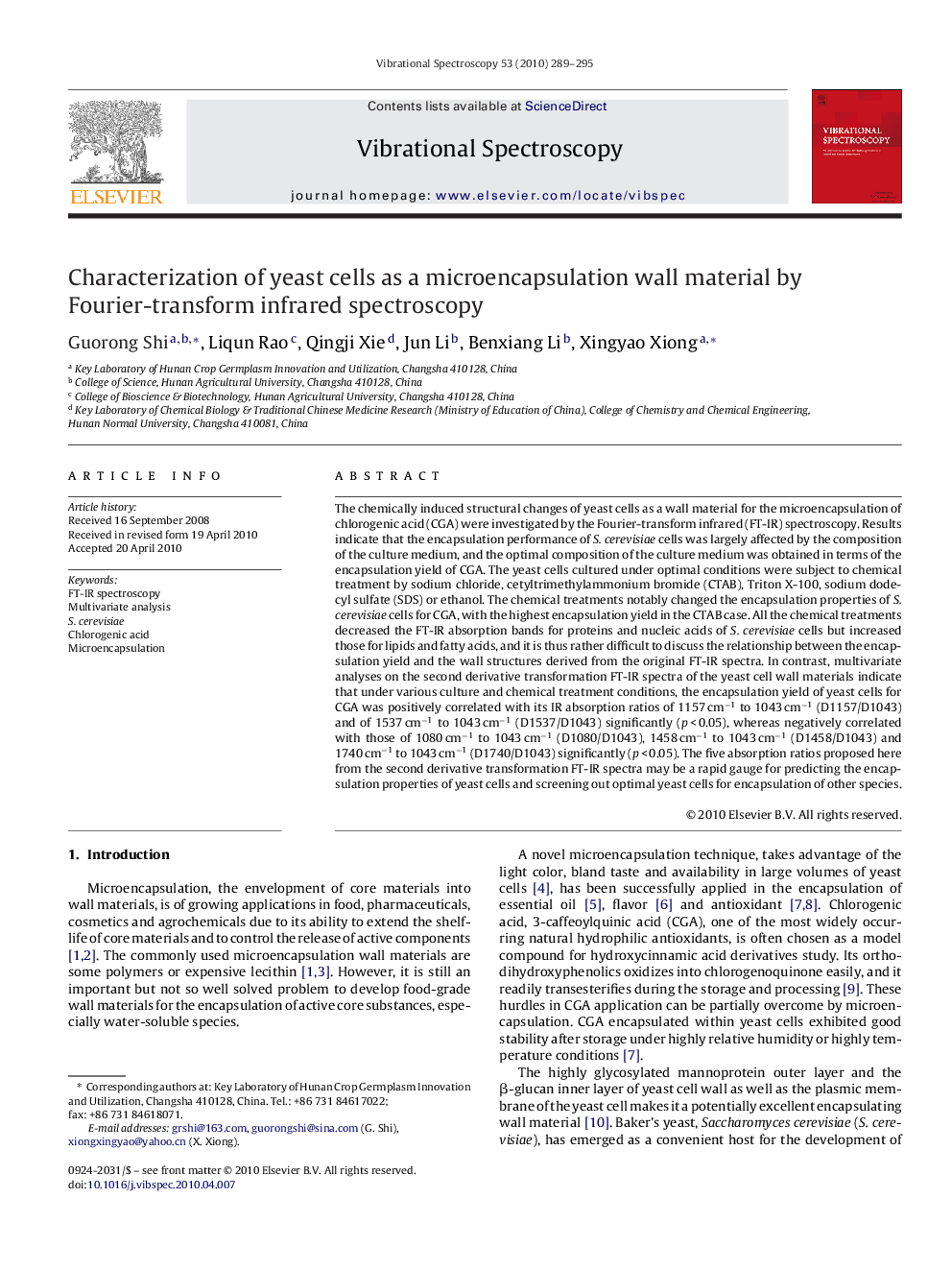| Article ID | Journal | Published Year | Pages | File Type |
|---|---|---|---|---|
| 1249681 | Vibrational Spectroscopy | 2010 | 7 Pages |
The chemically induced structural changes of yeast cells as a wall material for the microencapsulation of chlorogenic acid (CGA) were investigated by the Fourier-transform infrared (FT-IR) spectroscopy. Results indicate that the encapsulation performance of S. cerevisiae cells was largely affected by the composition of the culture medium, and the optimal composition of the culture medium was obtained in terms of the encapsulation yield of CGA. The yeast cells cultured under optimal conditions were subject to chemical treatment by sodium chloride, cetyltrimethylammonium bromide (CTAB), Triton X-100, sodium dodecyl sulfate (SDS) or ethanol. The chemical treatments notably changed the encapsulation properties of S. cerevisiae cells for CGA, with the highest encapsulation yield in the CTAB case. All the chemical treatments decreased the FT-IR absorption bands for proteins and nucleic acids of S. cerevisiae cells but increased those for lipids and fatty acids, and it is thus rather difficult to discuss the relationship between the encapsulation yield and the wall structures derived from the original FT-IR spectra. In contrast, multivariate analyses on the second derivative transformation FT-IR spectra of the yeast cell wall materials indicate that under various culture and chemical treatment conditions, the encapsulation yield of yeast cells for CGA was positively correlated with its IR absorption ratios of 1157 cm−1 to 1043 cm−1 (D1157/D1043) and of 1537 cm−1 to 1043 cm−1 (D1537/D1043) significantly (p < 0.05), whereas negatively correlated with those of 1080 cm−1 to 1043 cm−1 (D1080/D1043), 1458 cm−1 to 1043 cm−1 (D1458/D1043) and 1740 cm−1 to 1043 cm−1 (D1740/D1043) significantly (p < 0.05). The five absorption ratios proposed here from the second derivative transformation FT-IR spectra may be a rapid gauge for predicting the encapsulation properties of yeast cells and screening out optimal yeast cells for encapsulation of other species.
